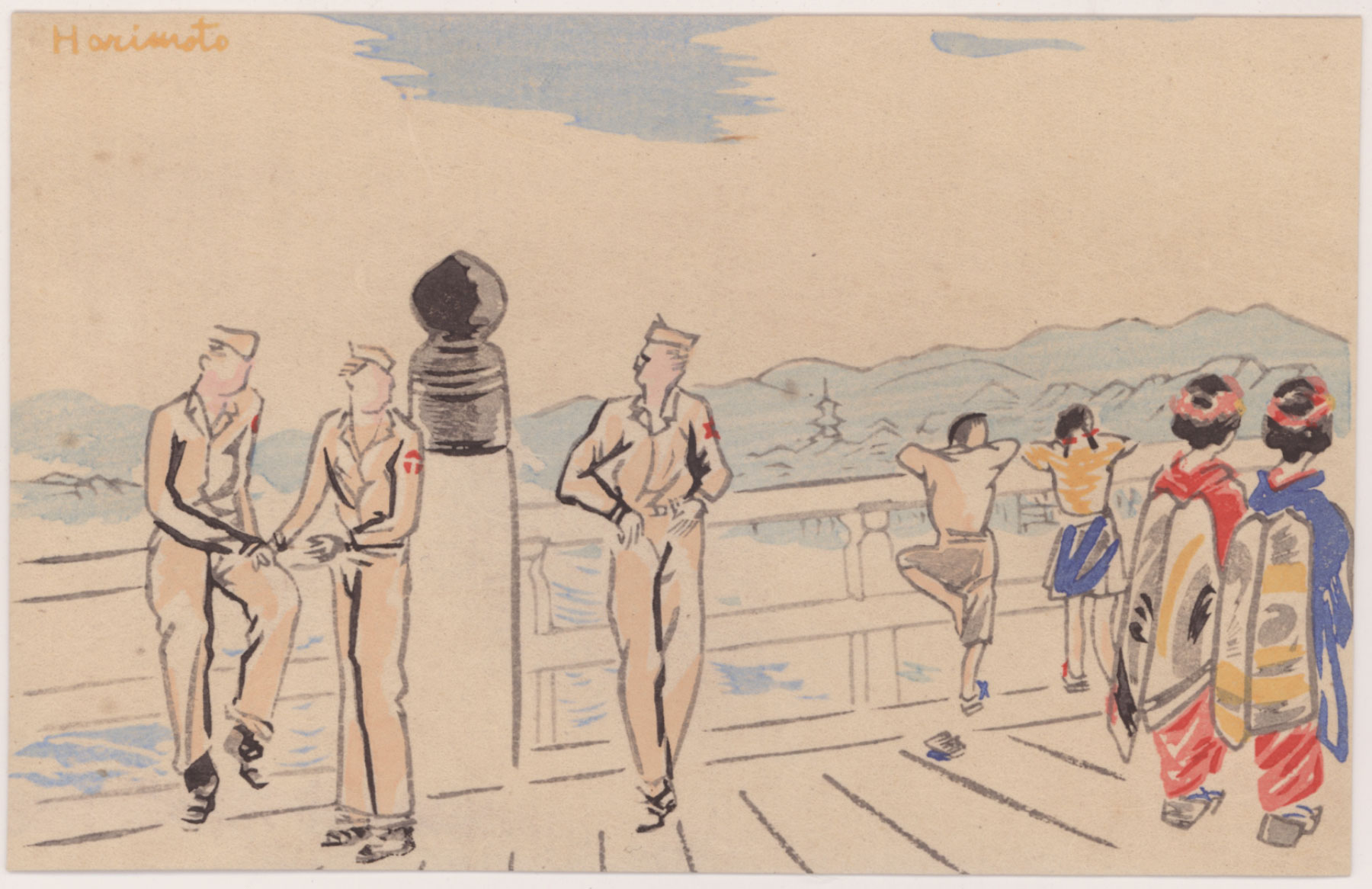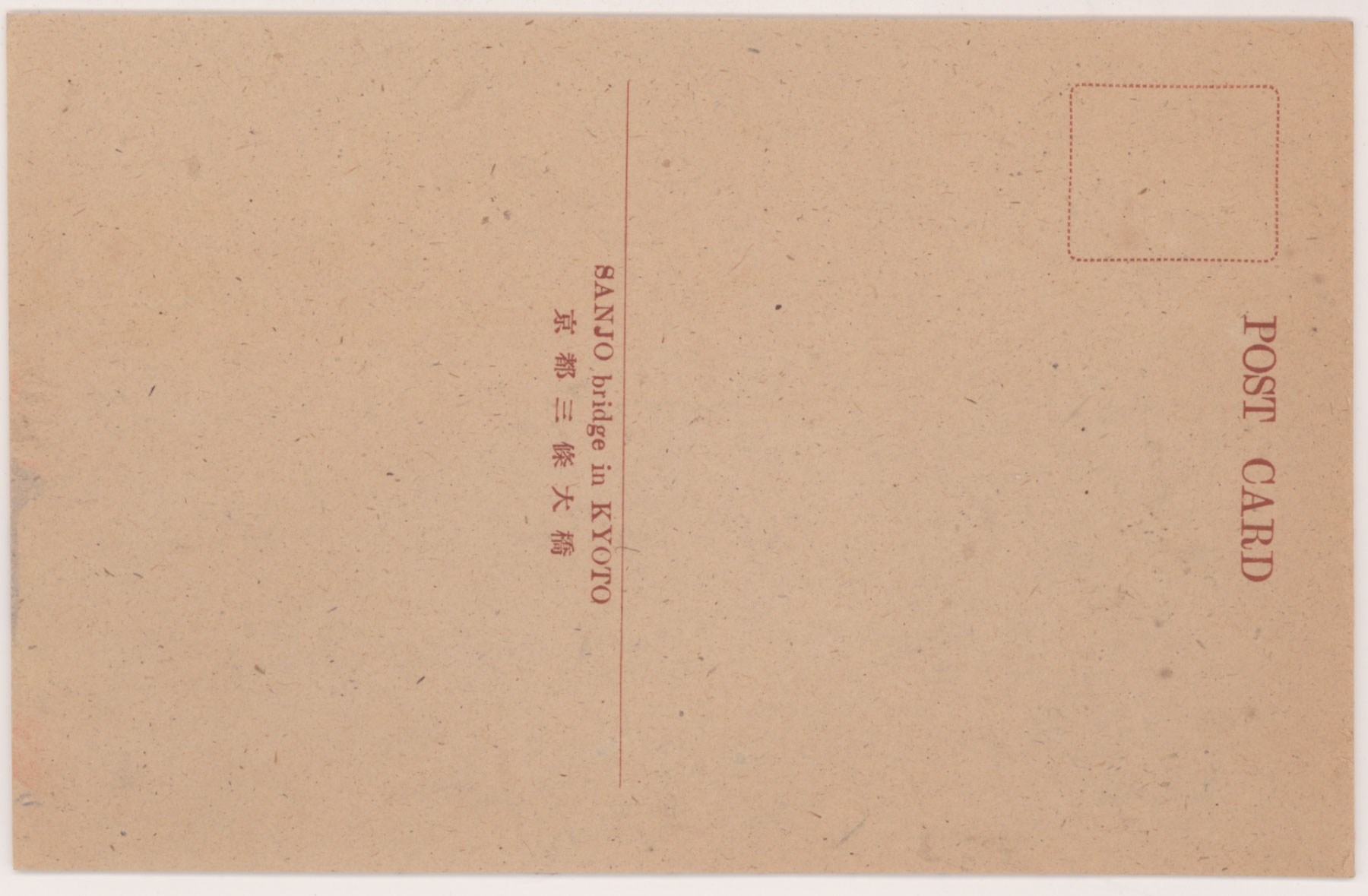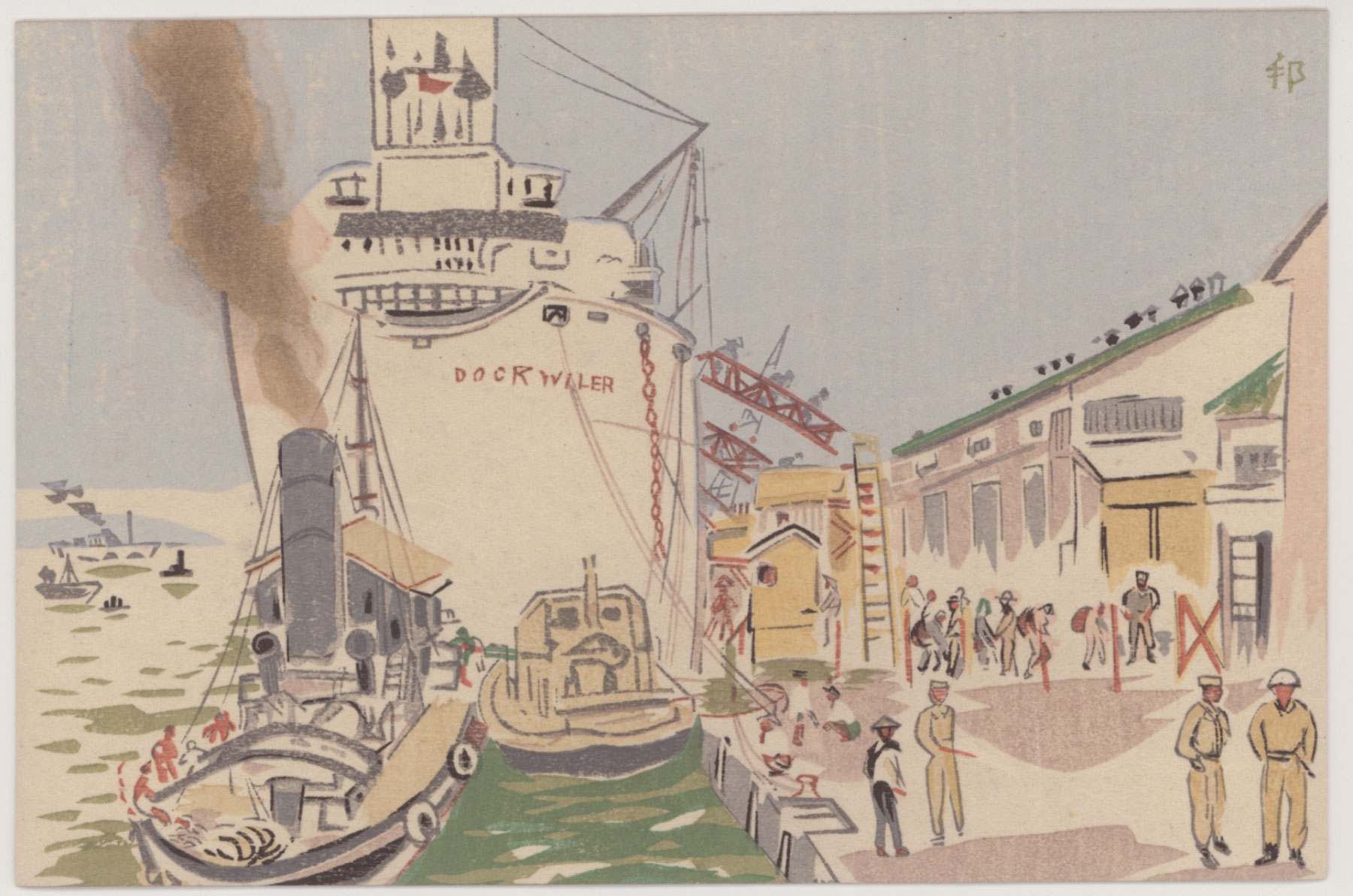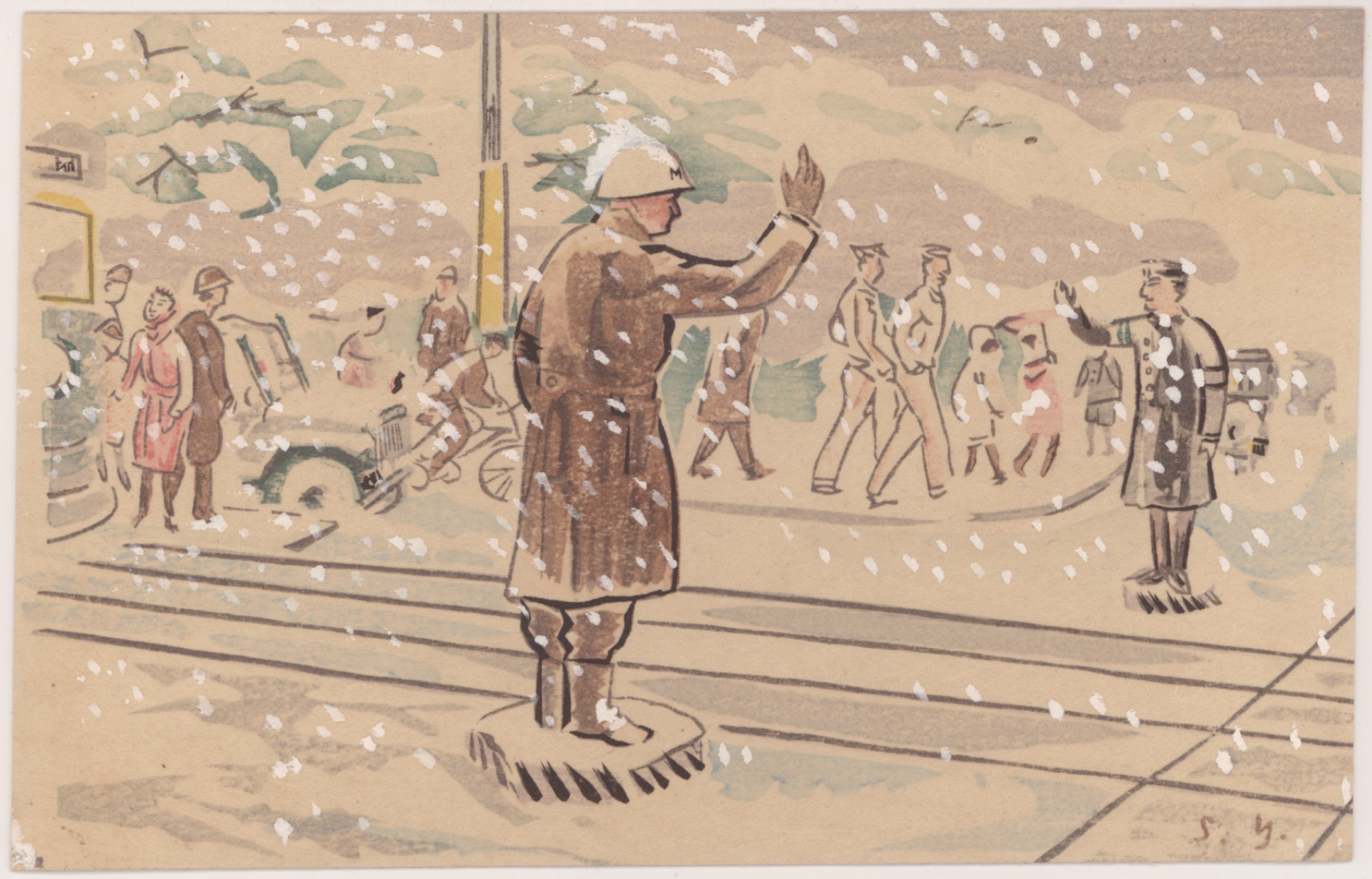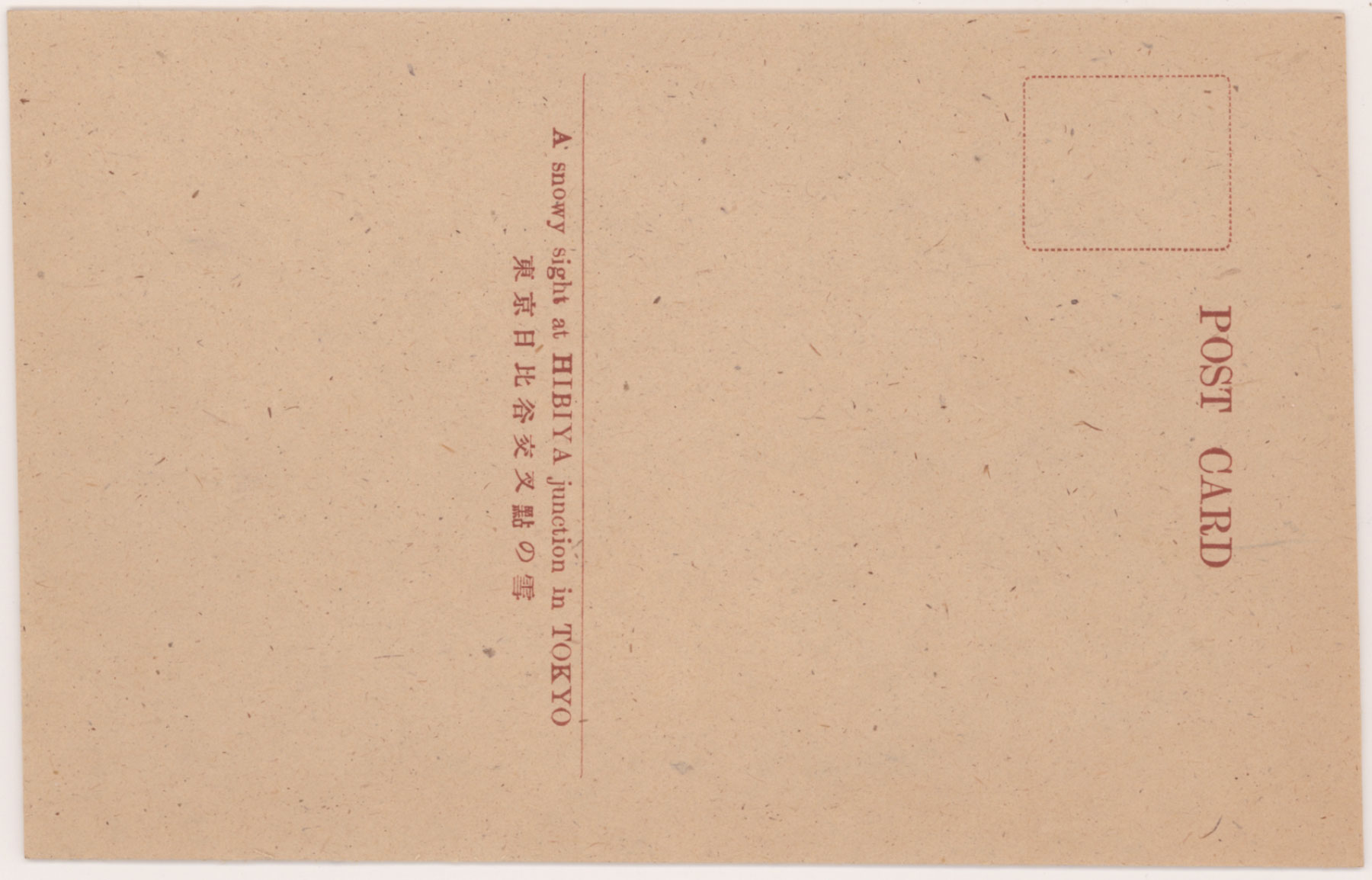About These Postcards
A set of three postcards created under the direction of Wada Sanzō (1883-1967) by unknown artists. The woodblock printed wrapper pictures a G.I. leaning against the railing on Kyoto's Sanjō Bridge. In the left corner "Hori" is printed, but it is unknown if this is the mark of the artist who created this design. The Japanese writing on the wrapper reads 木版絵葉書 アメリカの兵隊さんと 新日本風景 和田三造 補修, which can be translated as "woodblock postcards, Scenic Views of American Soldiers in New Japan (or Sketches of G.I. in Japan), Wada Sanzō, complemented." The meaning of "complemented" [補修 hoshū] is unclear. Lawrence Smith states "The involvement of the quite celebrated artist Wada Sanzō (1883-1968) in this series is not clear from the text, where the term ‘complemented’ (hoshu) might imply either ‘added to’ or ‘added by’."1 While each of the three postcards is signed (see "Artists" under "Print Details" below), the artists are unknown.All of the postcards display some aspect of cooperation between the Japanese and their American occupiers following the war.
Sanjō Bridge in Kyoto - Smith goes on to say "On one of the favourite tourist spots in Kyoto, three G.I.s have obviously just been enjoying the sight of two passing 'maiko' (the Kyoto variety of a 'geisha')."2
Japanese Coming Home on Hakata Pier - civilians are seen disembarking from the ship named the "Dockwiler" at Hakata Pier in Fukuoka. The ship is likely the Liberty Ship the S.S. John Dockweiler, launched in January 1944. Hakata was a major processing center for Japanese "displaced persons" who had been repatriated from China, Korea and other former Japanese colonies with the help of U.S. ships following Japan's defeat. The repatriation effort started in March 1946 and the Hakata processing center was closed by the end of 1948, making the publication date of these postcards likely in that period.3
A Snowy Sight at Hibiya Junction in Tokyo - an occupation soldier and a Japanese policeman join in directing traffic at busy Hibiya Junction. They seem to be waving to each other in a comradely way, further evidence of the harmonious relations between defeated Japan and the occupation forces depicted in these postcards.
1 Japanese Prints During the Allied Occupation1945-1952, Lawrence Smith, British Museum Press, 2003, p. 112, cat. 77.
2 Ibid.
3 For more information on the repatriation after the war see US Army Center of Military History website http://www.history.army.mil/books/wwii/MacArthur%20Reports/MacArthur%20V1%20Sup/ch6.htm
Print Details
| IHL Catalog | #1153, 1154, 155, 1156 | ||||||||||||
| Title/Description | 1153 - Sketches of G.I. in New Japan [wrapper for the set of three postcards] Amerika heitaisan shin Nihon fūkei アメリカの兵隊さんと 新日本風景 1154 - Sanjō Bridge in Kyoto Kyoto Sanjō Ōhashi 京都三條大橋 1155 - Japanese Coming Home on Hakata Pier in Hakata-kō no hōjin hikiageru 博多港の邦人引揚げ 1156 - A Snowy Sight at Hibiya Junction in Tokyo Tokyo Hibiya kōsaten no yuki 東京日比谷交差点の雪 | ||||||||||||
| Series | Sketches of G.I. in New Japan Amerika heitaisan shin Nihon fūkei アメリカの兵隊さんと 新日本風景 | ||||||||||||
| Artist | "complemented" Wada Sanzō (1883-1967)
| ||||||||||||
| Signature | see "Artist" above | ||||||||||||
| Seal | see "Artist" above | ||||||||||||
| Publication Date | 1946-1948 | ||||||||||||
| Publisher | Miho shobo | ||||||||||||
| Edition | | ||||||||||||
| Printer | Kyoto hangain 京都版画院 | ||||||||||||
| Impression | excellent | ||||||||||||
| Colors | excellent | ||||||||||||
| Condition | excellent - slight overall toning | ||||||||||||
| Genre | shin hanga | ||||||||||||
| Miscellaneous | |||||||||||||
| Format | | ||||||||||||
| H x W Paper | 1153 - wrapper: 8 1/4 x 8 1/16 in. unfolded (21 x 20.5 cm) 1154, 1155, 1156 - 3 1/2 x 5 1/2 in. (8.9 x 14 cm) | ||||||||||||
| Collections This Print | Museum of Fine Arts, Boston 2006.2037, 2006.2030, 2006.2033, 2006.20034; The British Museum 1994,1213,0.3 (Sanjō Bridge in Kyoto only) | ||||||||||||
| Reference Literature | Japanese Prints During the Allied Occupation1945-1952, Lawrence Smith, British Museum Press, 2003, p. 112, cat. 77 |



